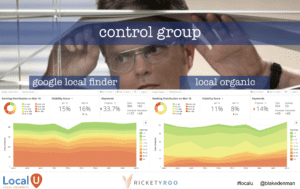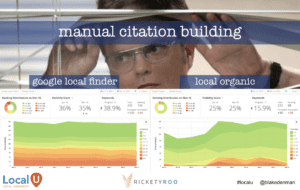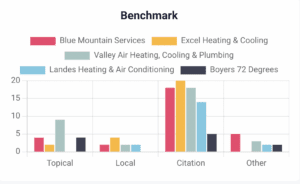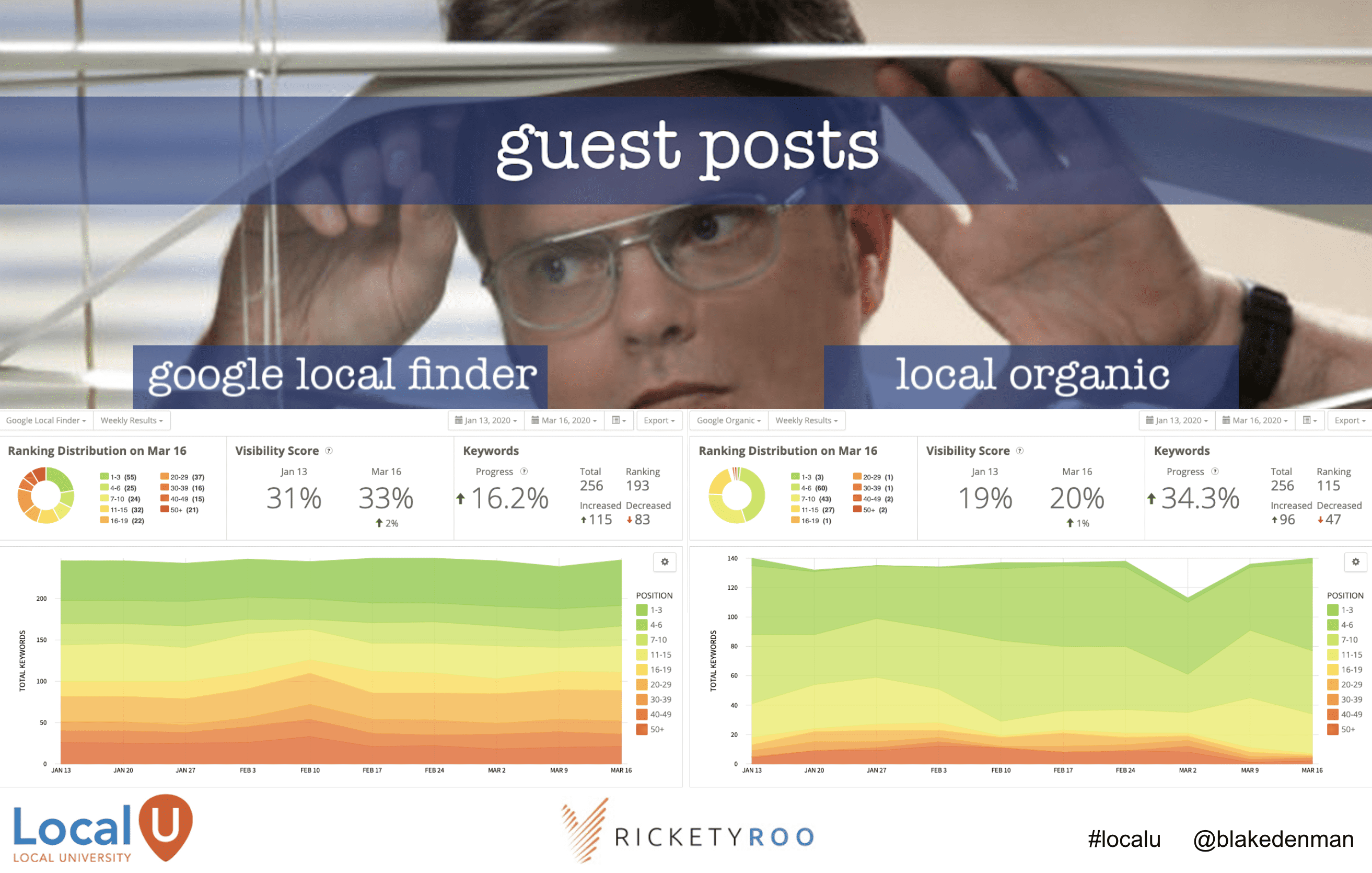Introduction to Competitive Link Analysis
Building links is one of the most important parts of an SEO strategy. It’s well-documented that there is a strong correlation between the number of links and the quality of backlinks. One thing that many SEOs do not talk about is the relationships and importance of the entities that are being linked.
For many websites, getting a link from an established entity can be just as effective or even more effective than just choosing a site that has a high DA or just boosting your total number of backlinks or referring domains. Focusing on websites with a clear relationship to an entity that already has a strong relationship with a topic or location we want to focus on can be a lucrative backlink strategy.
We can easily find these entity-based link opportunities by looking at our top-ranking competitors.
What is Competitive Link Benchmarking?
With competitive link benchmarking, we don’t have to start from scratch or hope that our content catches on — we capitalize on opportunities that were already found by our competitors, and we can see where our website might be lacking with different types of links.
Ahrefs, Semrush, Moz, and several other SEO tools will help you find who your competitors are getting backlinks from. It takes out some of the guesswork since we know this website will give backlinks to those in our industry. The level of convenience of this tactic has become apparent in the SEO industry.
Aira’s 2022 State of Link Building Report listed competitor analysis and targeting as the second-most popular strategy.
How to Do Competitive Link Benchmarking
Finding and wanting to target competitor backlinks is just the beginning. We don’t just duplicate competitor content and then call it a day. We need to understand and analyze how these links may impact their rankings. For content research, we consider the keyword or topic’s intent and the content quality. We should do the same with competitor backlinks.
How can we categorize these backlinks? Which of these backlinks are more likely to provide value?
The analysis of competitor links is where things get interesting. When reviewing multiple competitors, patterns will develop. It’s very easy to spot how the competition is building backlinks and not only replicating their strategy but also doing it better. This gives us a better understanding of why we aren’t in a better ranking position despite having better content. Let’s start with categorizing our competitors’ backlinks.
Backlink Categorization
The categories you choose to use will depend on your industry and type of website. Some common categories for backlinks are topical, local, citations/local listings, and editorial. Categorize all of your backlinks as well as your competitor backlinks into these buckets. Categorize the actual URL, not by the domain. A website could have blog content and a directory, but if your competitor is listed on a directory page, that should be categorized as a local listing.

You may find that your top competitors have more of one type of backlink than the others. You may find that your website has many directory backlinks while competitors ranking in positions 1 to 3 have focused on topical or editorial backlinks.
It’s not just about building links but building the right type of links.
- Topical linking opportunities are likely related to entities that are services, products, brands, manufacturers, etc
- Local linking opportunities are likely related to entities that are local organizations, local leaders, points of interest, cities, etc
- Citations are likely related to entities like cities and organizations
- Editorial linking opportunities are likely related to entities that are local or national organizations, local or national leaders, brands, manufacturers, services, products
Using the Data for Link Benchmarking
Once you find the gap between your backlinks and the backlinks of your top-ranking competitors, you know what types of sites you should be approaching for link outreach. Start with the websites that have given your competitors backlinks, and focus on what is needed to acquire those links.
- Do the site owners just allow you to set up a free account?
- Do they require a membership?
- Do they accept guest posts?
Once you find out which strategies successfully get you backlinks from competitor sites, find similar sites online that you can also get backlinks from.
Entering the websites you can acquire backlinks from in tools like Ahrefs and Semrush should reveal their competitors. These sites will likely have similar opportunities for you to gain backlinks with them as well.
Check out the Link Benchmarking Spreadsheet Template
The Results for Better Linkbuilding
Using this link benchmarking analysis will not only help you determine how your competitors’ backlinks are helping them overtake you in rankings but also provide you with opportunities to get links from the same sites.
Taking it a step further and looking at the competitors for the backlink sites allows you to find more opportunities than your competitors have instead of depending solely on their backlink profile to grow your own.
Using a wide variety of competitors also can help you create a more well-rounded backlink profile because you can take the best backlinks from each competitor, giving you the strongest backlink profile of all.
What to Do If Your Competitors Don’t Have Much to Offer
Say you go through the process and find that most of your competitors have terrible backlink profiles or barely any backlinks at all. Choose a larger nearby metro and complete the process again. High-ranking local businesses in a more competitive city could turn up more opportunities than your smaller, local competitors.
Case Study
We tested building links based on the findings from link benchmarking. Our results showed a strong correlation between ranking improvements for local organic keywords and new links built from our competitive link benchmarking analysis.
The Test
The client is a house cleaning business with over 40 locations in North America. We chose a group of locations that we would build links for and also chose a control group. For the locations we were testing, we followed a similar link benchmarking strategy as outlined in this blog post. RicketyRoo’s founder, Blake, created an entire presentation about this test for LocalU.
Findings
There was a 29.9% increase in local organic rankings for locations where we grew in manual citations due to being behind in our link benchmarking analysis. Locations that were previously behind in guest posts grew by 48.3% compared to the control group.

Control group which received no new links

Results for locations that were behind on guest posts

Results for locations that were behind on citations compared to competitors
Check out the Link Benchmarking Spreadsheet Template
Conclusion
We found a strong correlation between improved organic rankings and an increase in backlinks from competitor link benchmarking. Competitor analysis is one of the most popular backlink strategies that SEOs use, and it’s because it gets results.

We liked this so much that we built our own tool to make this process more efficient.
A good way to start link benchmarking is to:
- Use an SEO tool to find competitor backlinks and your backlinks
- Categorize backlink types
- Determine backlink categories where you are behind your top-ranking competitors
- Acquire backlinks from the categories where you are behind
MozCon 2023 Presentation
If you’re interested in learning more about local link building, we’ve presented an updated local link building study at MozCon.



